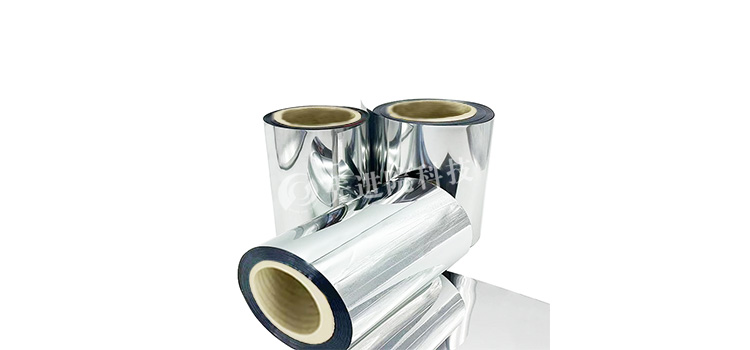PI silver plated film is widely used in numerous electronic devices and fields due to its excellent flexibility, insulation, and conductivity. Ensuring that the conductivity of PI silver plated film meets the standard during use is crucial for ensuring the normal operation, stable performance, and safety of the equipment. This article will provide a detailed introduction to the detection process during usePI silver plated filmThere are various methods to determine whether the conductivity meets the standard.
Resistance measurement method
Four probe method
This is a relatively accurate measurement method. The four probe method involves contacting the PI silver plated film with four probes, two of which are used to apply current and the other two are used to measure voltage. Due to the separation of the current probe and voltage probe, the influence of contact resistance on the measurement results is avoided, allowing for more accurate measurement of the resistance value of the PI silver plated film.
-
Operation steps: Press the four probes of the four probe tester vertically and stably onto the testing area of the PI silver plated film at the specified spacing. Setting the appropriate current value is usually determined based on the approximate resistance range of the sample and the range of the instrument, typically ranging from a few milliamps to several tens of milliamps. Read the voltage value displayed on the tester and follow Ohm's law
R=V/I(
R is a resistor,
V is the voltage,
I is the current) to calculate the resistance value.
-
Judgment criteria: Compare the measured resistance value with the standard resistance value specified in the product specification. If the measured value is within the standard range, it indicates that the conductivity meets the standard; If it exceeds the range, the conductivity may not meet the standard, and further analysis of the reasons is needed.

Two probing needle method
The two probe method is a relatively simple measurement technique that uses two probes toPI silver plated filmContact to measure resistance. However, this method is affected by the contact resistance between the probe and the membrane, resulting in relatively low measurement accuracy. Nevertheless, it can still be used in some situations where accuracy requirements are not extremely high.
-
Operation steps: Adjust the multimeter or specialized resistance tester to the appropriate resistance measurement gear. Close contact the two probes with the testing area of the PI silver plated film to ensure good contact and avoid virtual connection. Read the resistance value displayed on the multimeter or tester.
-
Judgment criteria: Similarly, comparing the measured value with the standard resistance value, due to the contact resistance error of the two probing methods, the measured value may be slightly larger than the actual resistance value. If it is within an acceptable error range and meets the standard requirements, it is considered that the conductivity performance is basically up to standard.
Surface resistance testing method
Surface resistance is an important parameter reflecting the conductivity of PI silver plated film, which represents the resistance encountered by current flowing on the surface of the film.
Use a surface resistance tester
-
Operation steps: Place the test electrode of the surface resistance tester steadily on the surface of the PI silver plated film, ensuring that the electrode is in full contact with the film and the contact is uniform. According to the operating instructions of the instrument for measurement, it is usually necessary to wait for a period of time until the value displayed on the instrument stabilizes. Record the measured surface resistance value.
-
Judgment criteria: Different application scenarios have different requirements for the surface resistance of PI silver plated film. Generally speaking, the measured surface resistance value is compared with the standard surface resistance range specified for the application scenario. If the measured value is within the standard range, it indicates that the conductivity meets the requirements; Otherwise, there may be issues with the conductivity.
Electromagnetic shielding effectiveness test
PI silver plated film is commonly used for electromagnetic shielding, and electromagnetic shielding effectiveness (SE) is a key indicator to measure its performance in this area, which can indirectly reflect its conductivity.
Using a Vector Network Analyzer
-
Operation steps: Select the appropriate sizePI silver plated filmInstall the sample in a specialized testing fixture, ensuring a secure and well sealed installation to avoid electromagnetic wave leakage. Connect the test fixture to the vector network analyzer and set the frequency range for measurement, generally from lower frequencies (such as 10MHz) to higher frequencies (such as 3GHz). According to the operating procedure of the instrument, the instrument will automatically measure and display the electromagnetic shielding effectiveness values of PI silver plated film at different frequencies.
-
Judgment criteria: According to actual application needs, there will be corresponding electromagnetic shielding effectiveness standard requirements. Compare the measured SE values at different frequencies with the standard values. If the SE values can meet or exceed the standard requirements at various frequency points or critical frequency ranges, it indicates that the conductivity of the PI silver plated film is sufficient to meet the requirements of electromagnetic shielding, and the conductivity meets the standard; If the SE values of some frequency points are lower than the standard, further inspection of the quality or installation of the PI silver plated film is required.

Current conduction test
Build a simple circuit test
-
Operation steps: Build a simple circuit, including power supply, load (such as resistors, light bulbs, etc.), and connecting wires. Connect the PI silver plated film into the circuit as part of the conductive path. Connect the power supply and observe the working condition of the load. If the load can work normally, such as the light bulb emitting light normally, it indicates that the PI silver plated film can conduct current and has basic conductivity.
-
Judgment criteria: For some applications with relatively low requirements for conductivity, as long as the load can work normally, it can be preliminarily considered that the conductivity of PI silver plated film meets the basic needs. But for applications with higher requirements, further measurement of the current value in the circuit is needed and compared with the theoretical calculation value. If the actual current value matches the theoretical value within a reasonable error range, it indicates that the conductivity meets the standard.
conclusion
Detect during usePI silver plated filmWhether the conductivity meets the standard or not requires the selection of appropriate testing methods based on the actual situation. Resistance measurement method, surface resistance testing method, electromagnetic shielding effectiveness testing, and current conduction testing all reflect the conductivity of PI silver plated film from different perspectives. By accurate measurement and comparison with standard values, it is possible to timely discover whether the conductivity of PI silver plated film meets the requirements, thereby ensuring the normal operation of related equipment and systems. Meanwhile, during the testing process, it is necessary to strictly follow the operating procedures to ensure the accuracy and reliability of the measurement results.
The above data is for reference only, and specific performance may vary due to production processes and product specifications.






